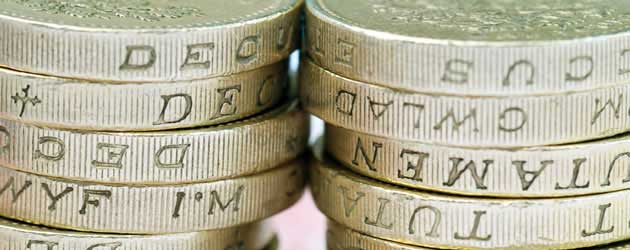
The Pound to Australian Dollar exchange rate (GBP/AUD) rallied by around 0.7 cents to 1.6960 earlier this morning as the Australian Unemployment Rate rose from 5.6% to 5.7%.
The labour market report was tinged with negativity throughout, as the Employment Change indictor printed at 1,100 compared to expectations of 10,000, and the Full-Time Employment barometer declined by -27,900. Particularly worrying for ‘Aussie’ Dollar traders was the fact that the participation rate fell to 64.8%, marking the lowest level of participation since October 2006.
Strong Sterling sentiment
The Pound was supported yesterday morning by a stronger-than-anticipated set of numbers relating to Manufacturing and Industrial Production.
Improved demand for British exports sent Manufacturing Production higher by 1.2% during September, compared to forecasts of 1.1%, whilst Industrial Production printed at 0.9%, exceeding expectations for a slightly lower score of 0.5%.
Sterling rose across the board in reaction to the latest outperforming UK economic indicators, which followed hot on the heels of Tuesday’s mighty impressive 16-year high Service Sector PMI print of 62.5 and Monday’s 6-year high Construction Output PMI result of 59.4.
However, the Pound’s performance faltered during the afternoon as the National Institute of Economic and Social Research released its estimate for UK growth between August and October. The NIESR predicts that British GDP slowed from 0.8% to 0.7% during the last three months, which impacted demand for Sterling. However, in light of the aforementioned October figures it is entirely likely that GDP will come in stronger when the official numbers are released by the Office for National Statistics.
Bank of England to maintain policy
At midday today the Bank of England is set to announce its monetary policy for November. The record low benchmark interest rate of 0.50% is expected to be maintained as is the £375 billion asset purchasing target. The BoE has not upgraded its quantitative easing scheme since July last year and market sensitivity to the announcement has softened in the 16 months since then, as the probability of additional stimulus has weakened. For this reason, the Pound is unlikely to fluctuate significantly following the announcement.
European Central Bank: To cut or not to cut
During the afternoon the European Central Bank is due to release its, far more contentious, interest rate decision. The ECB could, but is not expected to, reduce rates in November due to the region’s soft inflationary outlook. Last week Eurozone Consumer Prices fell to a 4-year low of 0.7%, which sparked a torrent of rate cut rumours and weakened the single currency markedly.
However, the majority of investors do not expect President Mario Draghi to announce a reduction in rates this afternoon, moreover, they predict that he will strike a dovish tone in his accompanying press conference to ready markets for a possible 25 basis point cut in December. If Draghi’s speech is considered foreboding, it is likely that the Euro will decline versus the majors.

Comments are closed.